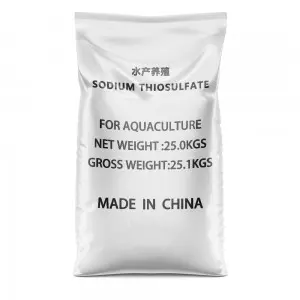



28 sodium chlorite solution
Understanding 28% Sodium Chlorite Solution Applications and Safety Considerations
Sodium chlorite (NaClO2) is a chemical compound that is widely recognized for its deodorizing, disinfecting, and bleaching properties. Among its various concentrations, the 28% sodium chlorite solution stands out for its effectiveness in a variety of applications, ranging from industrial uses to water treatment and even in some niche health solutions. This article will discuss the properties, applications, and safety considerations associated with the 28% sodium chlorite solution.
Properties of Sodium Chlorite
Sodium chlorite is a yellowish-white solid that is often provided in an aqueous solution for handling and application purposes. At a concentration of 28%, this solution exhibits strong oxidizing properties, making it suitable for a broad range of uses. The solution is stable under normal conditions but can react vigorously with acids and a number of organic materials, leading to the release of chlorine dioxide (ClO2) when mixed with acids. Chlorine dioxide is a potent disinfectant and sanitizer used in various industries.
Applications of 28% Sodium Chlorite Solution
1. Water Treatment One of the primary uses of 28% sodium chlorite solution is in water treatment processes. It is employed to produce chlorine dioxide, which is used to disinfect drinking water and wastewater. Chlorine dioxide is favored over chlorine because it does not form harmful byproducts like trihalomethanes, making it safer for human consumption and the environment.
2. Bleaching and Disinfection In the textile and paper industries, sodium chlorite is also used as a bleaching agent. It effectively whitens fabrics and paper without the damaging effects of more traditional bleaching agents. In addition, its strong disinfecting properties make it ideal for sanitizing surfaces in healthcare settings and food processing facilities.
28 sodium chlorite solution

3. Environmental Remediation Another significant application of sodium chlorite is in environmental cleanup efforts. It can be used to remediate groundwater contaminated with hazardous materials, including chlorinated solvents. By generating chlorine dioxide from sodium chlorite, it becomes feasible to breakdown complex pollutants into less harmful substances.
4. Health and Wellness Despite controversy surrounding its use, some alternative health practitioners promote sodium chlorite for its supposed health benefits. It is important to note that any use in this manner should be approached with extreme caution and under professional guidance, as improper usage can be harmful and even life-threatening.
Safety Considerations
While 28% sodium chlorite solution is effective for various applications, it also poses several safety risks that should not be taken lightly. The solution is classified as a hazardous material, and exposure can cause irritation to the skin, eyes, and respiratory system. It is critical to use appropriate personal protective equipment (PPE) such as gloves, goggles, and protective clothing when handling the solution.
Furthermore, sodium chlorite should be stored in a cool, dry place away from acids and organic materials to prevent dangerous reactions. It should be handled in well-ventilated areas to avoid inhalation of any vapors. Additionally, it is essential to understand the proper disposal methods for sodium chlorite waste to prevent environmental contamination.
Conclusion
In conclusion, 28% sodium chlorite solution is a versatile chemical with important applications in water treatment, bleaching, environmental remediation, and even alternative health practices. However, handling this powerful oxidizing agent requires strict adherence to safety protocols to mitigate its hazards. As applications of sodium chlorite continue to expand, ongoing research and education regarding its safe use remain critical in promoting public health and environmental safety.
-
Why Sodium Persulfate Is Everywhere NowNewsJul.07,2025
-
Why Polyacrylamide Is in High DemandNewsJul.07,2025
-
Understanding Paint Chemicals and Their ApplicationsNewsJul.07,2025
-
Smart Use Of Mining ChemicalsNewsJul.07,2025
-
Practical Uses of Potassium MonopersulfateNewsJul.07,2025
-
Agrochemicals In Real FarmingNewsJul.07,2025
-
Sodium Chlorite Hot UsesNewsJul.01,2025










